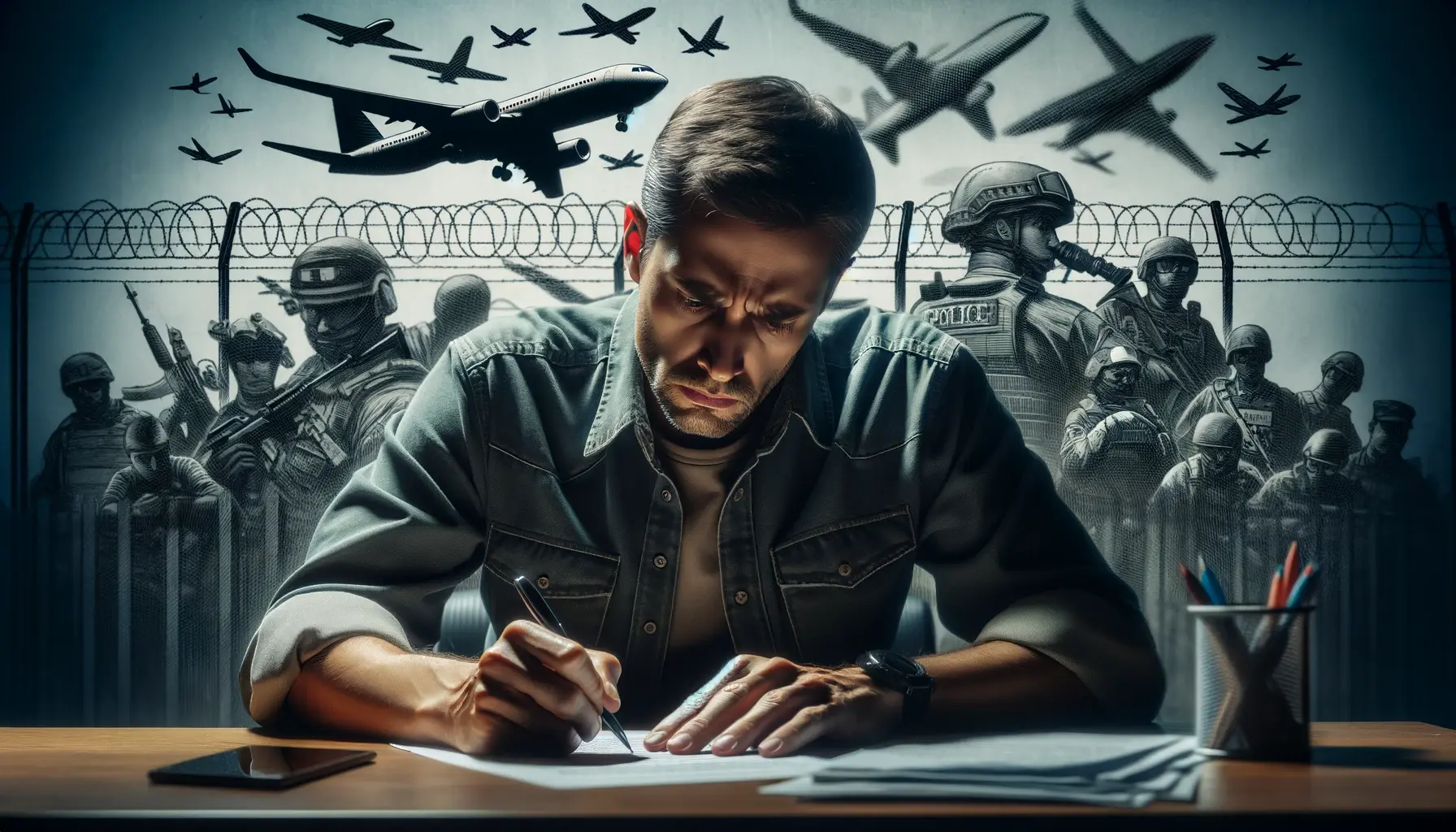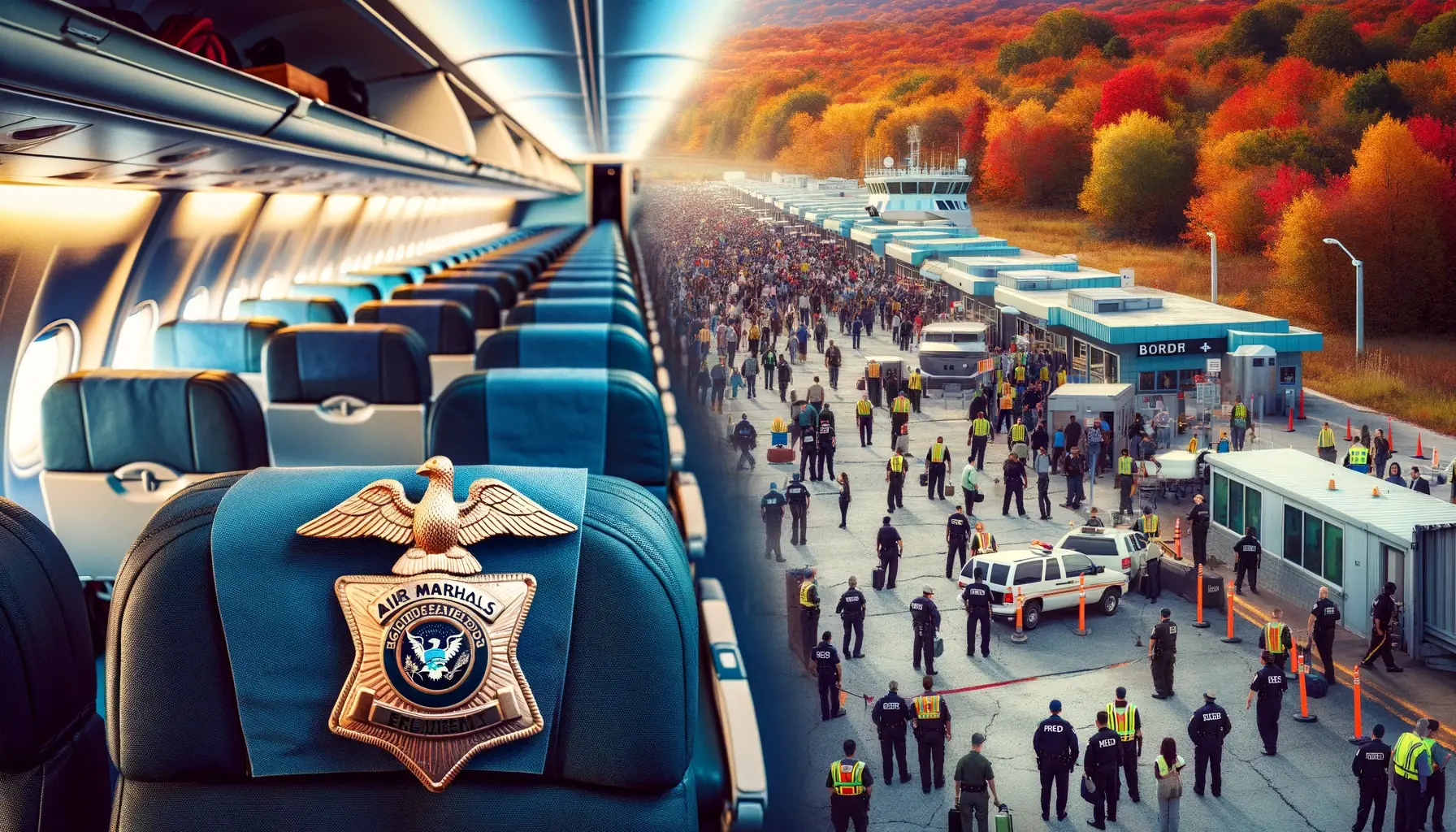As the scent of turkey and the hum of family gatherings herald the arrival of Thanksgiving, the skies above brace for a record-breaking influx of travelers. The Transportation Security Administration (TSA) is gearing up to screen an unparalleled 30 million passengers, weaving through the intricate tapestry of aviation security protocols to ensure each journey is as safe as it is joyous. This surge of peak travel season activity unfolds amid heightened vigilance, where the safety of the flying public converges with the specter of national security concerns - no Air Marshals.
Yet, as travelers secure their belongings and embark on trips laden with anticipation, a critical element of their in-flight protection quietly vanishes from the aisles. Air Marshals, those vigilant sentinels traditionally tasked with discreetly fortifying the shield against in-air threats, find their roles unexpectedly shifted. No longer nestled in the back rows of commercial airlines, a significant number of these federal law enforcement officers are instead deployed along the contours of the southern border. This reallocation poses a chilling question: with Air Marshals diverted from their posts in the skies to perform border patrol duties during a high-risk travel period, what becomes of the security once promised to those 30 million souls in the clouds?
TL;DR Summary:
As the TSA prepares for record Thanksgiving travel, Air Marshals pivotal to in-flight security are instead deployed to the U.S. southern border. This reallocation comes amid rising terror encounters at the border and leaves many flights without their customary silent guardians. Criticism comes from government officials and public alike, who question the wisdom of this shift during a peak travel season. This move sparks a critical dialogue on the balancing act between securing national borders and ensuring passenger safety in the skies.
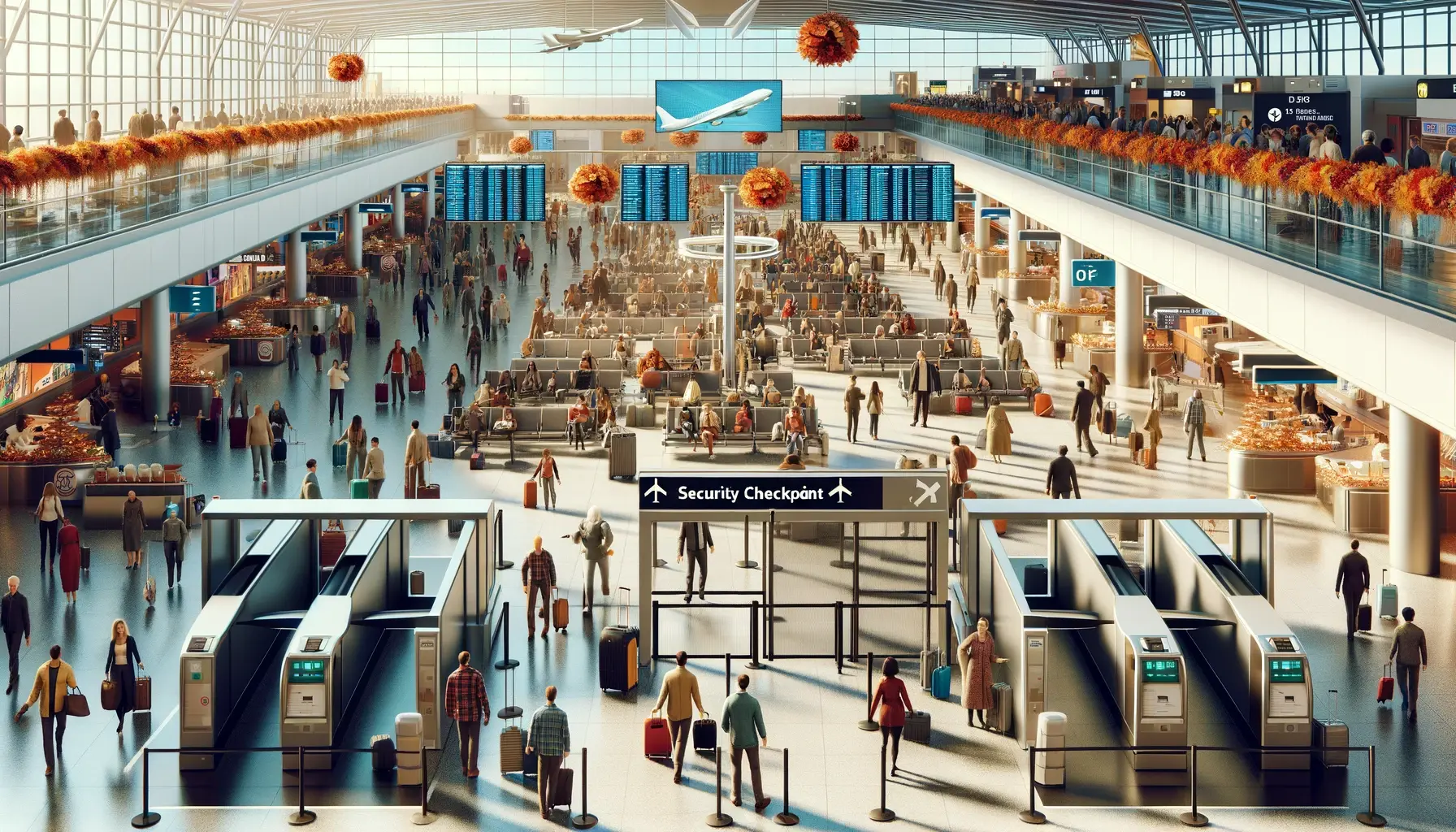
The Role of Air Marshals in Aviation Security
Deployed in the aftermath of 9/11 as a bulwark against terrorist threats, Air Marshals have become a silent yet formidable fixture within the fabric of airline passenger safety. Tasked with the mission of blending into the sea of travelers, these agents of the Federal Air Marshal Service (FAMS) carry the weight of vigilance on each flight they board. They are rigorously trained in counterterrorism operations, prepared to intervene with decisive action at the first sign of a threat. In-flight protection cannot be taken lightly in an era beset by uncertainties, and the presence of these guardians has been a cornerstone of aviation safety best practices, offering reassurance to the public and a deterrent to would-be attackers.
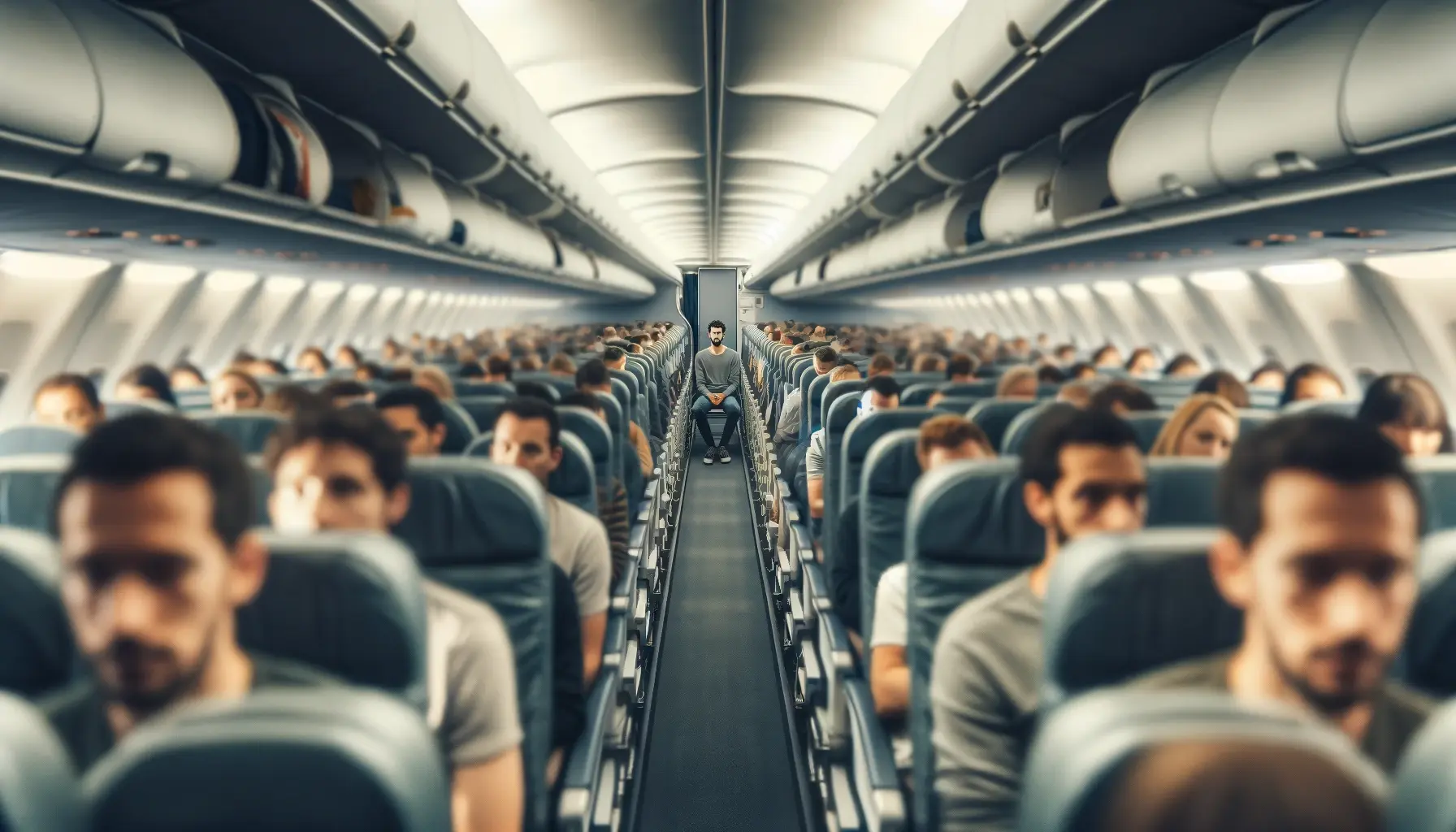
However, the current shift in resource allocation has whisked away these vital security assets from their designated realm in the clouds to the tumultuous grounds of border security. The Quiet Skies program—once praised as a cutting-edge initiative to track and scrutinize potentially risky passengers—now redirects its focus and personnel to surveil individuals based on geographical markers and past travel to the National Capital region. This stands in stark contrast to the program's intended purpose, raising concerns among Federal Air Marshal Service members and the Air Marshal National Council. With their surveillance assignments changing course, the risk assessment and management onboard commercial flights may inevitably suffer, eroding the layers of safety that passengers have come to expect. The burgeoning question looms: without their critical roles on airplanes, can the security standards of the TSA and broader aviation threat intelligence community maintain their integrity against potential in-air incidents?
Redirecting Resources: Border Deployment During Peak Travel
In a move that has sparked contention within security circles, the Federal Air Marshal Service faces a significant operational shift, one where its agents exchange the cramped confines of commercial airlines for the expansive and unforgiving terrain of the southern border. This redeployment during the Thanksgiving travel peak is not merely a matter of moving personnel but rather a profound shift in national security priorities. It comes at a time when the border patrol has encountered soaring numbers of terror suspects—with 169 individuals apprehended in the last fiscal year alone, a staggering increase from previous years. This startling statistic fuels the argument for bolstering the border, yet it leaves the skies palpably thinned of their law enforcement shield.
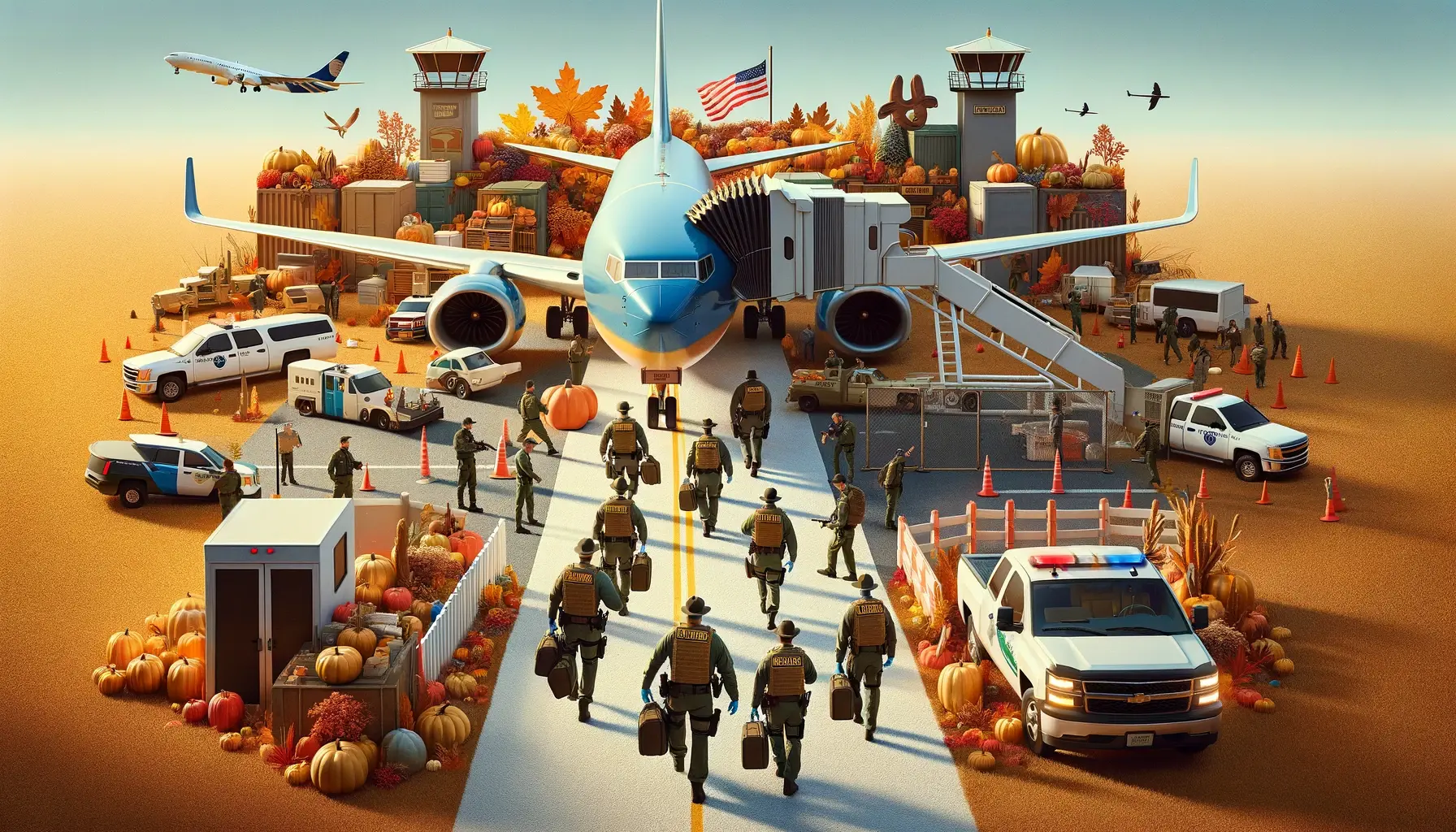
The deployment of air marshals to assist with humanitarian border crisis management raises intricate questions about security resource allocation. How are the roles of these highly skilled professionals being repurposed, and do these new duties effectively utilize their counter-terrorist training? The juxtaposition of combating illegal immigration versus safeguarding against potential threats from the air invites a debate that reverberates throughout the corridors of power. As these guardians of the sky hand out water and perform administrative work far from their usual beats, airline passengers are left to ponder the safety of their journey without this understated layer of protection.
Seeking to address these concerns, letters and inquiries proliferate from congressional oversight committees to the desks of Homeland Security Secretary Alejandro Mayorkas and TSA Administrator David Pekoske. The stark absence of air marshals from flights contrasted with heightened security alert levels prompts urgent calls for a re-examination of current policies. Yet, with responses lacking and progress stalling, the reassessment of how and where we deploy our security forces remains stagnant in a sea of bureaucratic inertia.
Agents in the Federal Air Marshal Service, along with the Air Marshal National Council, have watched with growing unease as the security stronghold once established within our nation's aviation system appears compromised by these redeployments. As pleas for reconsidering these decisions go unheeded, one can't help but wonder about the wisdom of untethering the vigilant watch of air marshals from the very environment they were once so integral in securing. Faced with the reality of juggling pressing priorities between aviation safety and border security, the country grapples with the inherent risks introduced by this unsettling realignment.
National Security Concerns
The reassignment of America's Air Marshals, deemed the last line of defense in aviation security, to roles peripheral to their core specialization, unfolds against a backdrop of intensifying national security concerns. The threat landscape is not confined within the boundaries of an aircraft cabin or the stretches of a border—it is a complex network of risks that requires a balance between proactive and reactive security measures. The unexpected surge in terror suspect encounters at border crossings underscores a harsh reality: threats to national security have not diminished—they have evolved and diversified, necessitating an agile and equally multifaceted response.
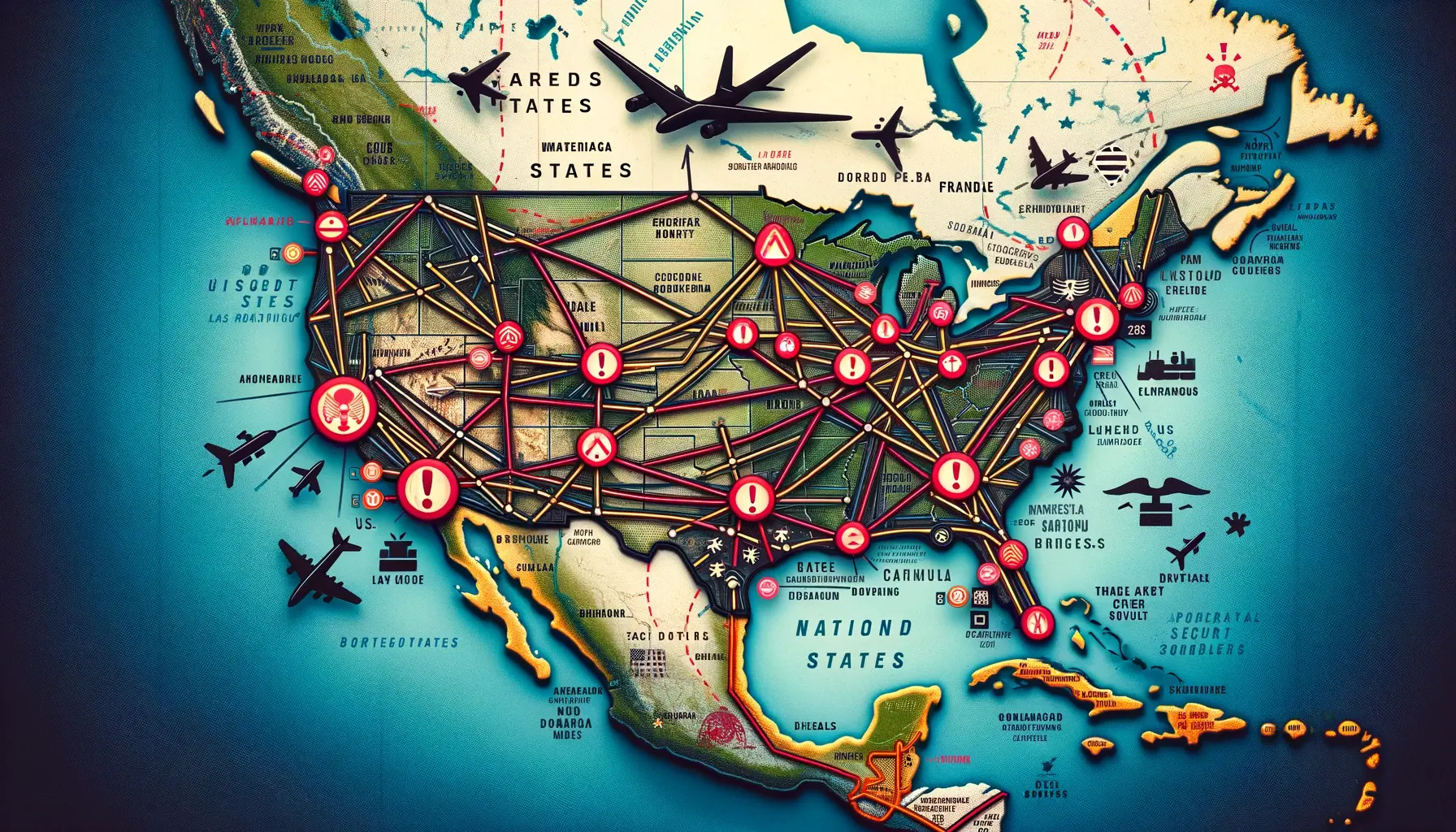
The federal government's current emphasis on strengthening border security inadvertently creates a vacuum in the skies—one that may embolden actors with malicious intent to exploit perceived vulnerabilities. This shift in focus away from the essential counterterrorism operations aboard flights compromises the otherwise stringent security protocols in place since the post-9/11 era. As such, the decision provokes both alarm and scrutiny from various stakeholders, including counter-terrorist experts, legislators, and the traveling public, all of whom share a vested interest in maintaining a secure airspace.
Yet, the discourse is not without contention. Homeland Security leaders assert that national security is elastic, capable of extending its reach to both air and ground threats. However, critics challenge this assertion, pointing to the specialized nature of in-flight protective measures that differentiate Air Marshals from other law enforcement agencies. The rationale for diverting these dedicated resources to the border—a mission area with distinct challenges and demands—is a topic of passionate debate. The dichotomy between the view that the border is a gateway for potential threats and the stance that it is already secure—as posited by officials like Secretary Mayorkas—adds a layer of complexity to an issue already mired in political and logistical challenges.
This repurposing of security assets speaks to a broader strategic question: how do we balance the imperative to guard our gateways with the need to ensure the safety of those traveling within our borders? The juxtaposition of fortified borders and potentially uncovered skies raises the stakes, as policymakers and security agencies navigate the delicate interplay between safety in the air and on the ground.
The Government's Stance
Caught in the crosshairs of national debate, the Department of Homeland Security (DHS) and the Transportation Security Administration (TSA) find themselves at the epicenter of a pivotal security conundrum. The reallocation of Air Marshals to the southern border, as mandated by DHS, is a clear indicator of the government's prioritization of border security, even as the skies teem with an unprecedented number of travelers during the Thanksgiving holiday. Secretary of Homeland Security Alejandro Mayorkas and TSA Administrator David Pekoske stand as the gatekeepers of this policy, holding the authority to either perpetuate or curtail the current trajectory of air marshal deployment.
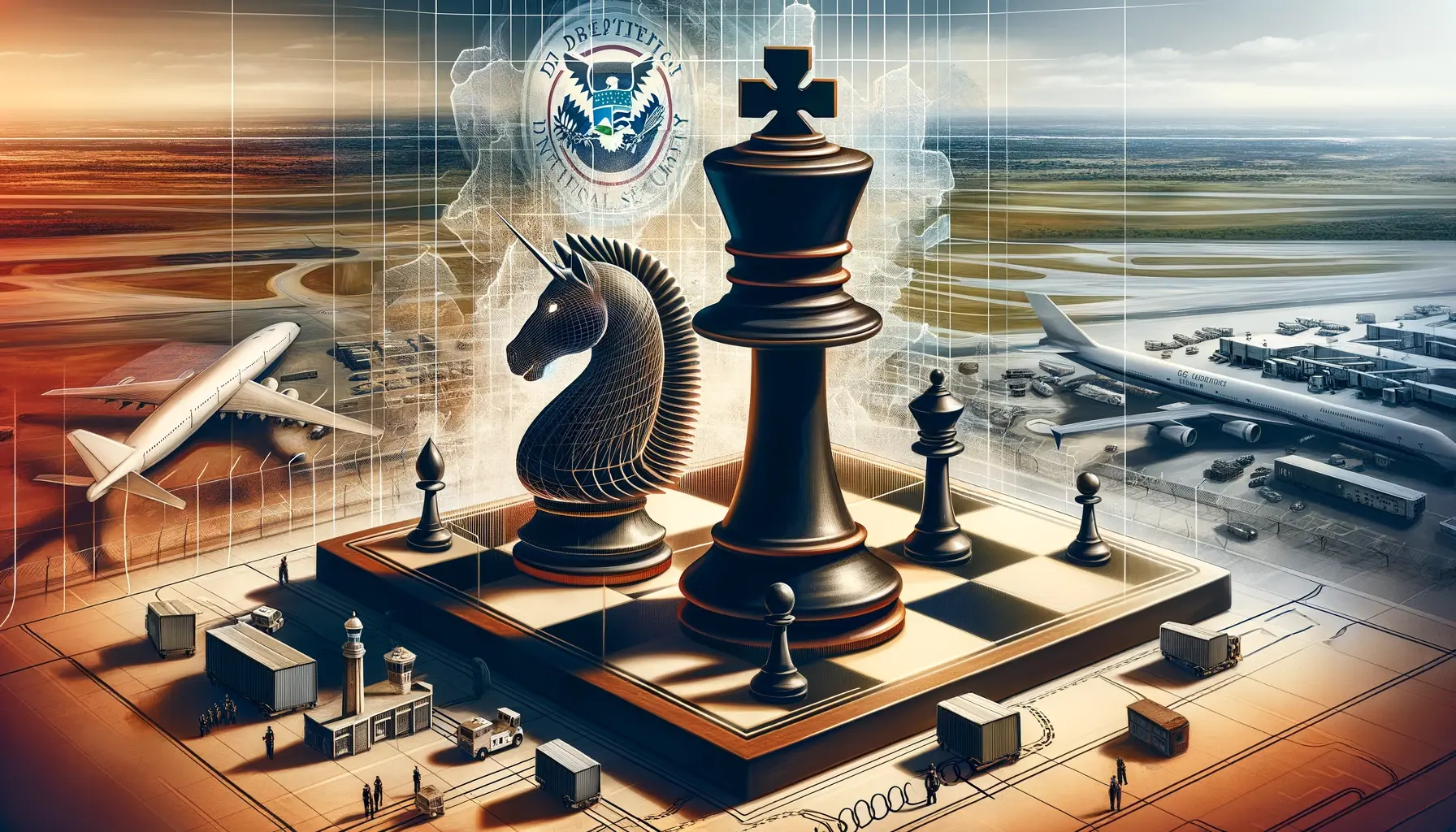
With their hands on the levers of homeland security policy, Secretary Mayorkas and Administrator Pekoske have been recipients of mounting scrutiny. Email correspondences, official letters of inquiry, and vocalized concerns by the Air Marshal National Council have bombarded their offices, each communication echoing a singular plea: redirect the focus back to in-flight security. The resounding cries from the aviation security sphere advocated not only by dedicated Air Marshals but also by the vigilant eyes of Congress, seek to disentangle the interwoven threads of TSA duties and border assignments.
Despite these efforts, the leadership's response remains a stubborn silence, a firm stance that pits increasingly strained resources against the relentless tide of seasonal travel. DHS's insistence that the border is secure, as voiced by Secretary Mayorkas, stands in stark dissonance with reports of lapses and inefficiencies at the borderline—a contradiction not unnoticed by a concerned public and apprehensive lawmakers. The repeated affirmations from DHS of a secure border clash with the outcry from stakeholders demanding evidence of such claims, and the quest for greater transparency and rationale behind the disruptive redirection of air marshals commands the spotlight in this unfolding drama of national security.
Impact on Air Marshal Operations
The galvanized necessity for air travel safety has met with an unexpected detour, diverting Air Marshals away from their sworn duty to protect the flying public amidst the cacophony of bustling airports and packed flights. Typically incognito amongst air travelers, these highly trained agents are now scarcely found in the skies, with their tactical prowess redirected toward the expansive and often chaotic environs of the southern border. Vital missions that would usually see them clandestinely stationed aboard aircraft to deter and respond to acts of terrorism are now reprioritized to a different theater of operation, leaving a noticeable void in the Federal Air Marshal Service's ability to conduct their quintessential duties.
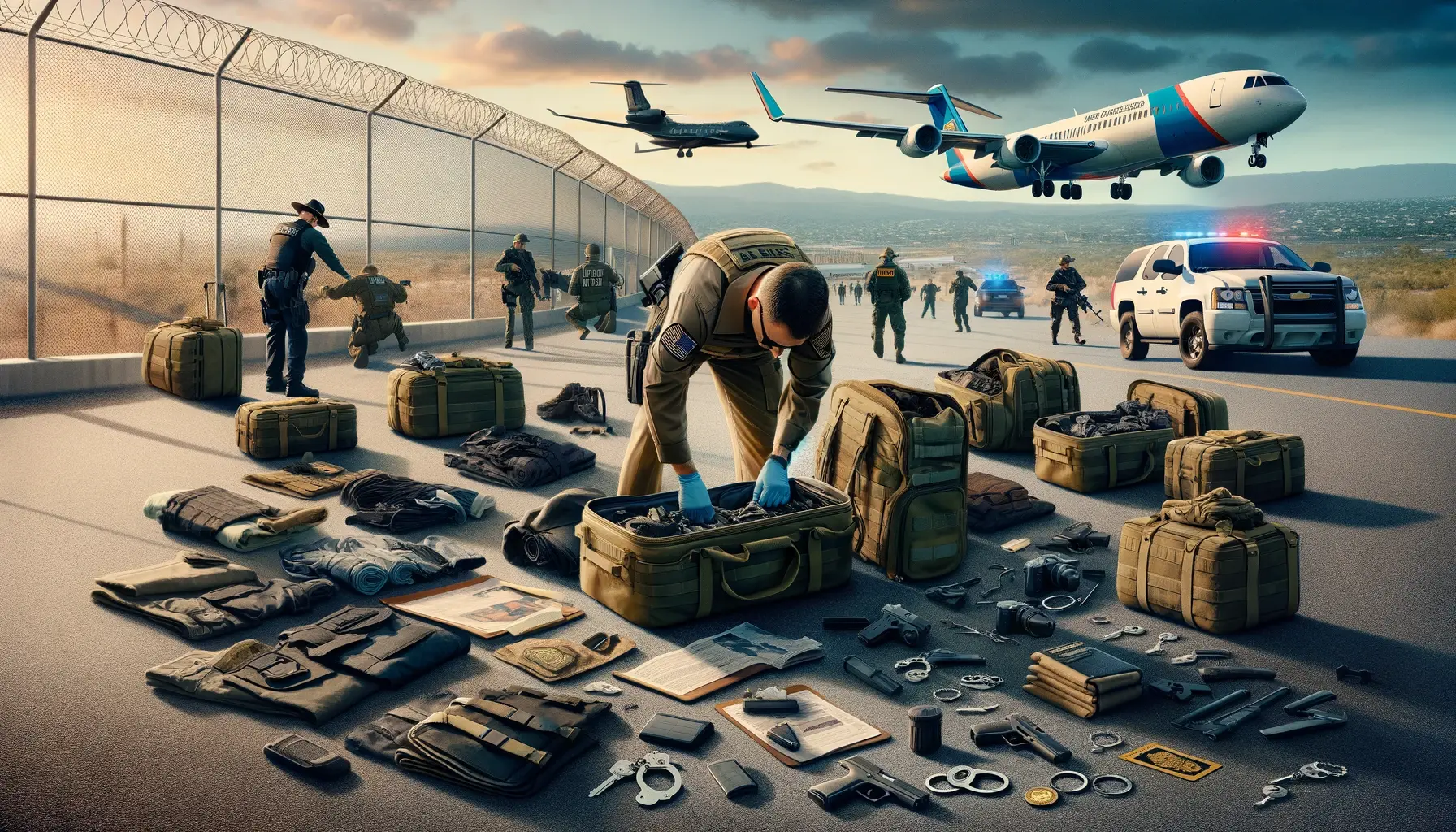
The change has not only disrupted the deployment of these critical law enforcement assets but also reshaped the essence of their day-to-day activities. The Quiet Skies program, once emblematic of the TSA's vigilant watch over American skies, has refocused its lens onto the individuals tied to the events of January 2021. The program's surveillance capabilities, originally intended to discreetly monitor and address potential terrorism-related risks in real-time, are instead being used to track people based on their presence in the nation's capital during a tumultuous moment in history. This shift of focus has sparked concerns over the erosion of civil liberties and posed questions about the effective distribution of government resources.
Air Marshal operations have invariably been impacted by this reallocation, resulting in a significant decline in the number of officers on flights. In a role that requires acumen for onboard threat detection and neutralization, these marshals find their expertise underutilized, tasked with non-enforcement roles that diverge starkly from their extensively honed skillsets. With the air marshal ranks now thinned to a shadow of their former presence on commercial flights, the fortified layer of silence in the skies holds a new vulnerability. This recalibration away from air travel security, towards an arguably less effective utilization of specialized training, casts doubt on the adequacy of measures in place to respond to in-air emergencies and terrorist activities.
Congressional and Public Response
As air marshals adjust to new orders away from the familiar confines of passenger jets, the echo of concern has resonated in the halls of Congress, inciting a vigorous response from lawmakers. The issue's gravity has prompted Senator Cruz and members of the Commerce, Science, and Transportation Committee to escalate their scrutiny, demanding accountability through formal inquiries. These letters probe for justification behind the decisions that have sidelined air marshals from their traditional counterterrorism focus. Congressional oversight seeks to uncover the impetus for the pivot towards the southern border and the ramifications it poses to air travel safety—especially at a time when industry statistics reveal a peak in travel volume.
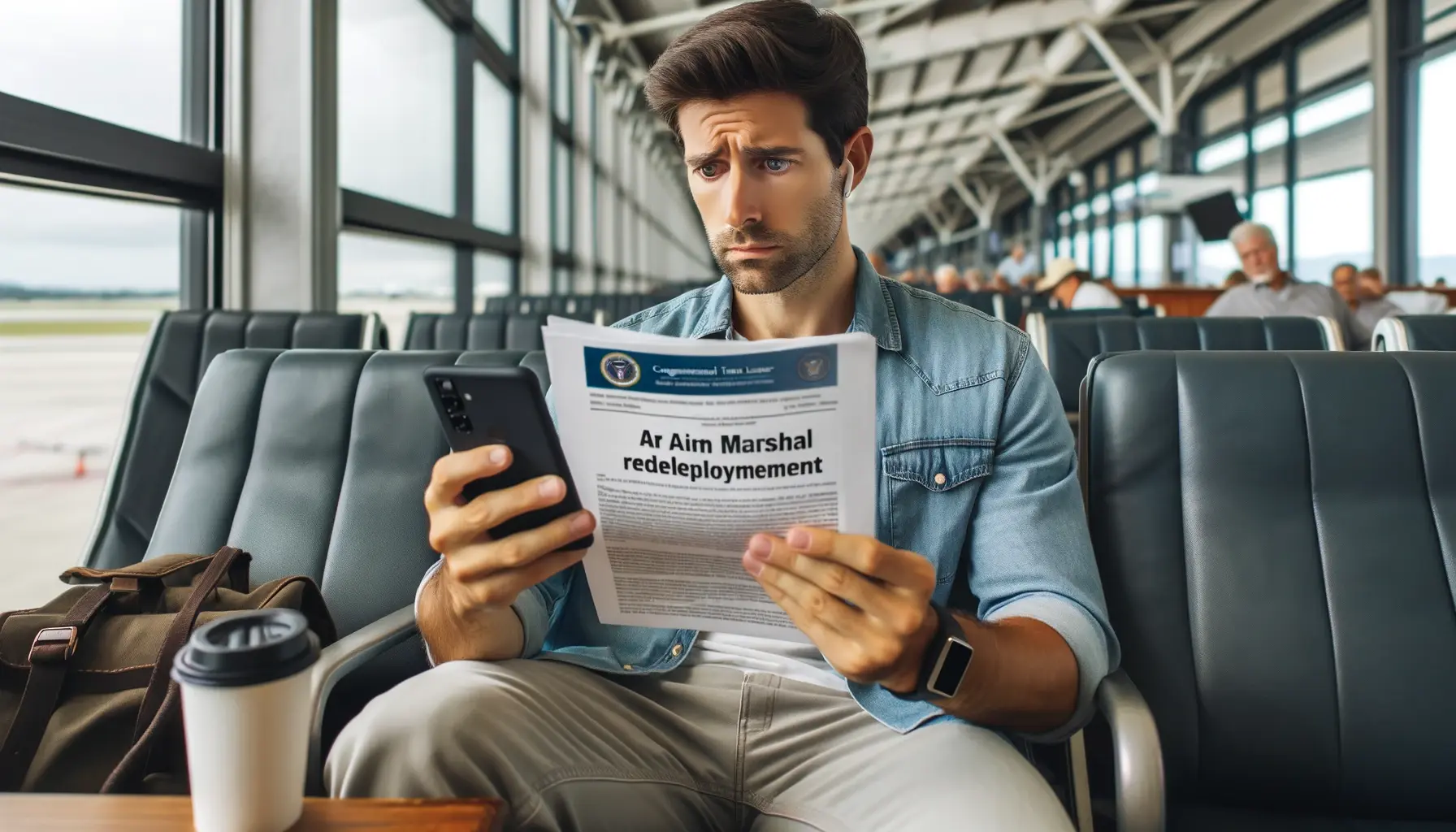
Amidst this legislative push for answers lies a public consciousness increasingly attuned to their safety while in transit. Travelers, once comforted by the silent presence of air marshals, now face the unsettling reality of flights potentially unpatrolled against terror threats. The public outcry transcends mere discontent, evolving into an assertive conversation on traveler security measures and the visible gap left by these absent guardians of the sky. Debates ignite across social media and news outlets, reflecting a society grappling with the implications of shifting security narratives, where safety protocols and counter-terrorism tactics historically ensured peace of mind now seem less ironclad.
The disquiet does not dwell in the abstract; it manifests in tangible terms, measured by community expectations and a shared belief in the inviolability of secure air travel. As the dialogues unfold and tensions rise within the political arena and the broader public domain, the urgency for a recalibrated approach grows. The chorus calls for a repeal of the current FAMS redeployment strategy, advocating for a reinstatement of their indispensable role aboard flights, accentuating the sentiment that security staffing should live up to its raison d'être: to protect and serve without compromise.
Interview - Sonya Labosco on Air Marshal Redeployment
The crux of this unfolding narrative finds vivid articulation in the words of Sonya Labosco, the executive director of the Air Marshal National Council. In a candid interview that sheds light on the tension between Air Marshal duties and the shifting sands of DHS policy, Labosco presents an insider's perspective on the ramifications of reallocating these critical security specialists. Her insights provide an invaluable piece of the puzzle as we seek to understand the true impact of these redeployments on national safety.
Video/Transcript
- Carly Shimkus: The TSA is expected to screen a record 30 million passengers this Thanksgiving. And it comes as 169 terror suspects were encountered at the southern border last fiscal year, more than the previous six years combined. Air marshals though are tied up down at the border instead of on flights where they should be. Sonya Lobasco is the executive director of the Air Marshal National Council and she joins me now. Sonya, good morning to you. So there's going to be a record travel day coming up tomorrow with the terror alert high because of everything that's going on in Israel. Give us an update on the situation with air marshals. Are they still getting sent down to the southern border?
- Sonya Labosco: Carly, nothing has changed since we've been fighting this for almost two years. The air marshals are still down on the border. We are not flying right now. We just received an email last week that the resources are depleted as far as our flying air marshals. So we are ushering in illegal immigrants on the border and leaving the traveling public unsafe.
- Carly Shimkus: So who has the power to change this and get those air marshals back on the planes where they belong?
- Sonya Labosco: Well, that's going to be DHS Secretary Mayorkas and TSA Administrator David Pekoske, which we have emailed. We have sent letters. We are working with Congress. We're working with Commerce, Science and Transportation Committee. Senator Cruz recently sent out a letter requesting information on why. Why are we diverting our only resource to secure our aviation and sending them down on the border? And remember, the only thing we're doing on the border is passing out water. We're not doing law enforcement duties.
- Carly Shimkus: Yeah, you're doing it. These air marshals are doing administrative work, passing out water, like you said. Has Secretary Mayorkas responded? This seems like such an obvious security issue, especially when you just had Christopher Wray testify that the southern border, yes, is a major concern, especially when we don't know who's coming into our country.
- Sonya Labosco: Yes, Secretary Mayorkas has said more than once that the border is secure, that the border is secure, so he is not concerned with that. But we all know that the border is not secure. He will not call this a crisis. But now not only is the border destabilized, so is our aviation is destabilized, as well.
- Carly Shimkus: So you're making absolutely no headway on this?
- Sonya Labosco: Zero. We've made zero headway.
- Carly Shimkus: Okay, so how many air marshals are on planes right now, and how many do you think there should be to get to a safe level?
- Sonya Labosco: Well, Carly, we're not flying right now. The only missions that we're doing are Quiet Skies missions, and those are missions that are following the January 2021 people. So we're either on the border for illegal immigrants, or we're following folks from January 2021. We're not doing our regular missions where we're out there looking for the bad guys. So right now on most flights, you're not going to have air marshals.
- Carly Shimkus: What do you mean by that? You're following January 2021 people. What does that mean?
- Sonya Labosco: That means our primary mission is a little group called Quiet Skies. It's a mission called Quiet Skies that we're following people that flew into the National Capital region in January 2021. You did not have to go to the capital or the rally, and you've been put on a specific list that TSA now has assigned air marshals to follow these people who have not had any type of criminal investigation. They haven't committed a crime, but yet three years later, we're following the same individuals day in and day out.
- Carly Shimkus: So you're saying that air marshals are now following people that were at the capital on January 6th, and they're not tracking terrorists at all?
- Sonya Labosco: Well, they didn't even have to be at the capital, Carly. They could have just flown into the National Capital region. So if anybody was there for a job interview, to visit family, we even had a gentleman that was there for a funeral. They put on this domestic terrorist list just because of their geographic location to Washington, DC. So these people did not even commit a crime. They weren't even at the capital.
- Carly Shimkus: What? Do those people know that they're on this list?
- Sonya Labosco: Some of them do, because when they go to the airport, they get the Quaddus on their boarding pass, and then they have to go through enhanced security. And they're followed by teams of air marshals on any leg of flight that they have. So yes, a lot of them do know that they're being followed, yet they haven't been vetted, and they have not committed a crime. And three years later, we're still doing the same duty, and we followed the same people over and over for three years who were no threat to this country.
- Carly Shimkus: Oh my goodness. Okay, so if you are an average passenger on a plane, how concerned should you realistically be?
- Sonya Labosco: I think you should be very concerned. When you're boarding the aircraft, you need to look around to see who you might be able to ask to help you, like a good Samaritan, because you're on your own. If anything happens, please don't wait. There's gonna be no law enforcement that's gonna help you. So you need to have a plan. Look where the exit doors are. Look where your flight attendants are standing around you. But I would look at other passengers to see. You know, I would be looking around for a football player or somebody, a pretty big guy or a couple big guys, in case you needed to take action.
- Carly Shimkus: Wow. Well, we had you on to talk about air marshals getting sent to the southern border, and you opened up a whole new topic for us to follow. So Sonia, we thank you for that insight and joining us this morning. We appreciate it.
- Sonya Labosco: Thank you, Carly, and thank you for covering this very important issue.
- Carly Shimkus: Absolutely. It is very important. Have a great day. Thank you so much.
Assessing Passenger Safety
Amid the turbulence of policy shifts and operational restructurings, the safety of passengers flying during this heavily trafficked period hangs in the balance. The low hum of concern among travelers has amplified to a resounding alarm as the reality of thinly spread in-air security sets in. Sonya Labosco's stark admonishment for passengers to be self-reliant resonates disquietingly with those who will pack the waiting areas and gaze out from departure lounges - their thoughts clouded with unease about the invisible shield of security that has seemingly dissipated.

Labosco's call for passengers to be vigilant and prepared – to identify the "good Samaritan" who might aid in an emergency situation – spotlights the stark shortfall in onboard law enforcement presence. This recommendation starkly contrasts the sense of untouchable security once guaranteed by the stealthy watch of air marshals. The implication that air travel now presents a scenario where passenger self-defense could be necessary elucidates a newfound vulnerability, a fissure in the once unassailable façade of aviation safety.
As the flying public considers this new paradigm, the crucial role of flight crew training in emergency protocols comes under scrutiny, given the heightened responsibility they must shoulder in the absence of air marshals. Passengers are advised to familiarize themselves with the layout of the aircraft, the location of exit doors, and emergency procedures. In the event of a critical incident aloft, the severity of outcomes may hinge upon the ability of airline staff and passengers to respond cohesively and effectively – a daunting prospect for those untrained in crisis management.
The unsettling implication that civilians could be called upon to confront and neutralize threats reverberates with a sobering reality: the skies may not be as checked as once believed. Confidence in air travel safety, a cornerstone of modern aviation, now faces a rigorous test. With air marshal availability in flux, each flight's security patches together a narrative of resourcefulness and resilience – a stark departure from the assurance that once stemmed from highly specialized federal protection.
Looking Ahead: Future of Flight Safety and Border Security
As the dust settles on these recent changes, the implications for the future of flight safety and border security become focal points of both concern and speculation. The redirection of Air Marshals to the southern border has been key to addressing illegal immigration and providing humanitarian assistance, yet the consequences for aviation security need to be equally measured and anticipated. Policy shifts may wax and wane with administrative tides, but the ongoing debate emphasizes a stark reality: there must be a sustainable balance between these two critical elements of national security.
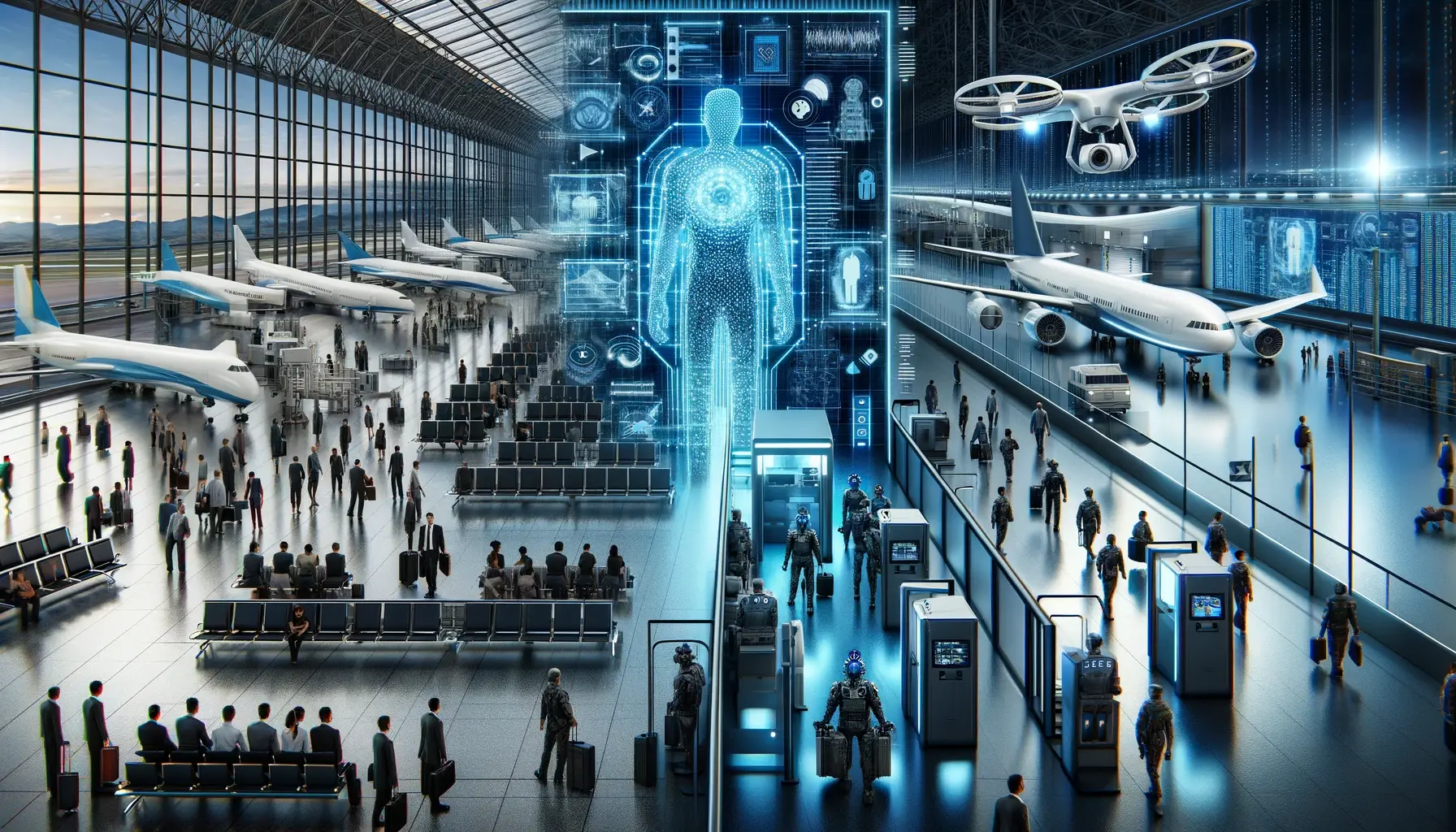
The Federal Air Marshal Service, initially created to fortify the offensive against in-air terror threats, now stands at a crossroads, navigating the intricacies of federal law enforcement responsibilities while responding to evolving security concerns. Future iterations of border assignments and in-flight duty rosters must bear the stamp of lessons learned—ensuring that each deployment effectively harnesses the specialized training and capabilities of these elite officers. It invites a reassessment of risk management strategies, prioritizing comprehensive coverage that does not undermine one area of security for another.
Looking forward, it is clear that an integrative approach is essential. Proactive counter-terrorism tactics, meticulous risk assessment, and a robust presence in the skies and at border crossings are joint components of secure national infrastructure. As travelers traverse a world where boundaries—literal and metaphorical—grow increasingly blurred, the necessity for unwavering vigilance from our security apparatus remains unabated. Policymakers, security experts, and the public alike will watch keenly to see how the pendulum of resource allocation will swing in the days to come, shaping the ultimate narrative of security across America's horizons.
Conclusion
In the wake of this significant reallocation of security forces, the narrative surrounding American aviation and border safety unfolds with new complexity. As Air Marshals adjust away from the cabins and cockpits and onto the rugged trails of the border, the public's perception of safety in the skies enters a state of flux. This shift, mirroring a broader discourse on national security's adaptability, leaves a patchwork of concerns in its wake—a tapestry of policy, protection, and the public good.
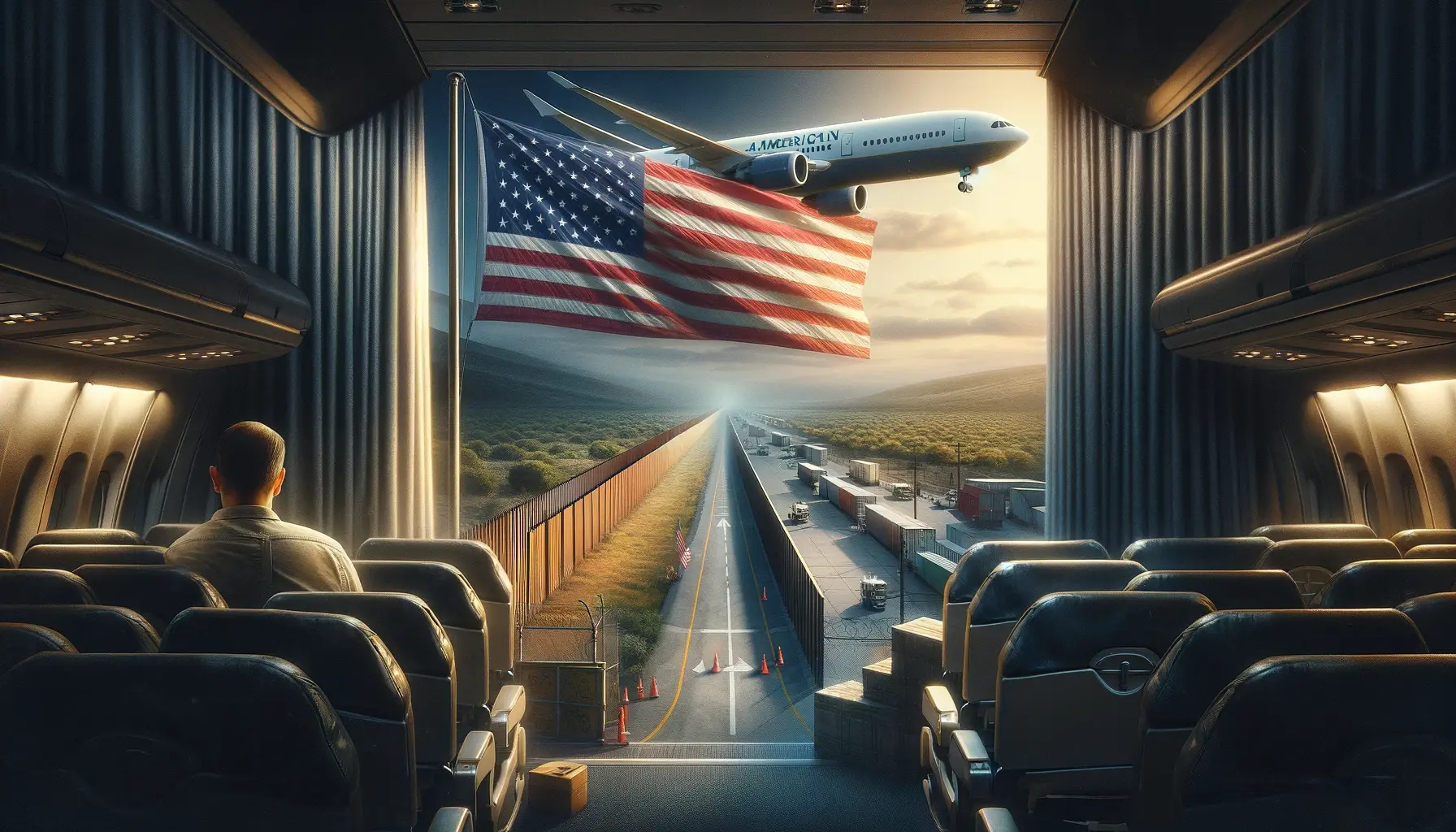
Call to Action
The departure of Air Marshals from their posts in the skies to assignments at the border is a call to action for every American citizen: to remain vigilant, to stay informed, and to engage with their representatives to ensure that the balance between aviation safety and border security does not tilt unwittingly towards one side. As passengers who rely on the invisible shield of airborne guardians, and as citizens who trust in robust border defenses, we are tasked with advocating for a security model that doesn't compromise one domain for another. In an age where the frontlines of national security stretch from the skies above us to the ground beneath, our voices are pivotal in shaping the policies that keep those frontlines strong and secure.
